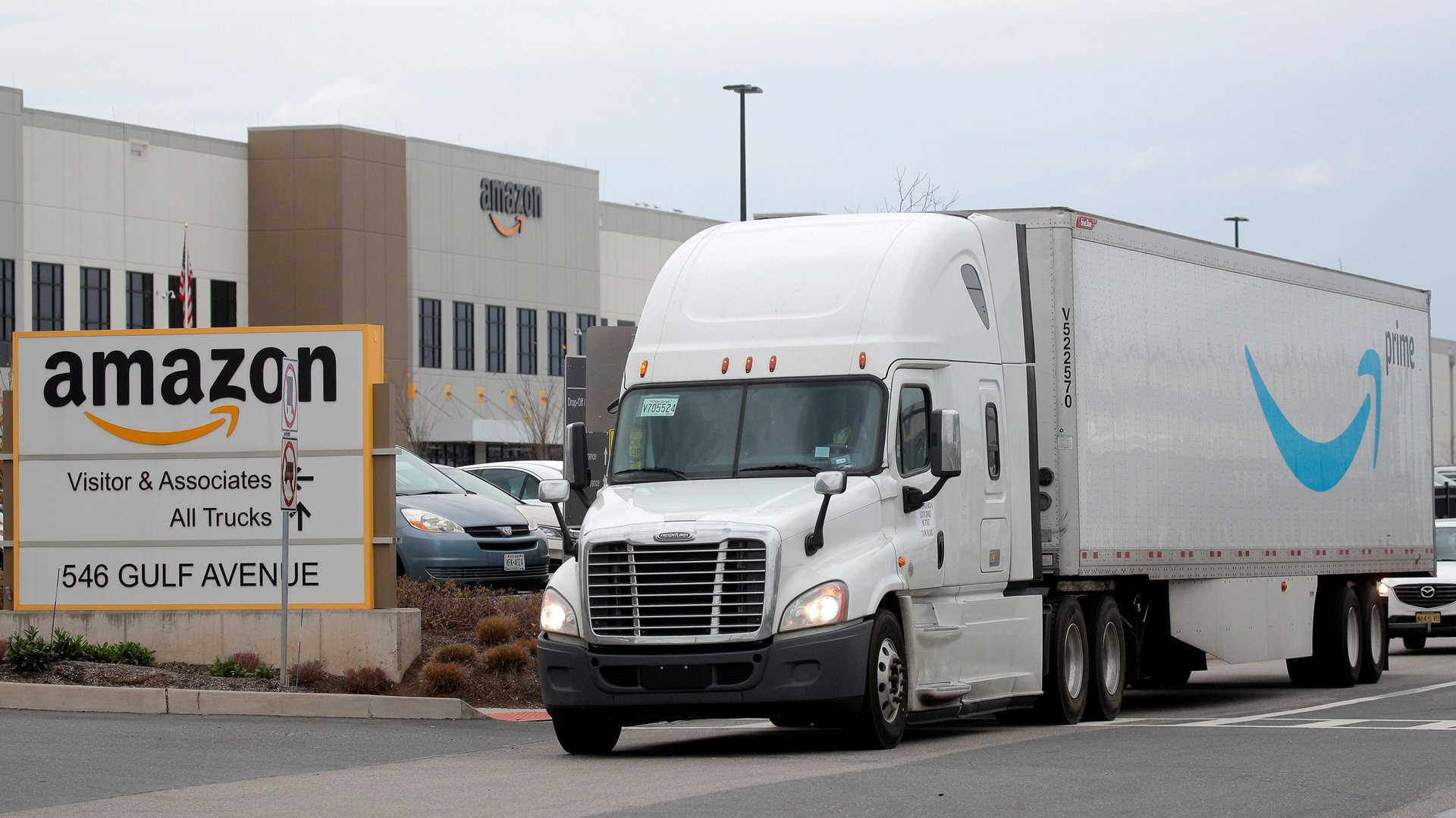Amazon now delivers more US packages than FedEx
In 2014, Amazon delivered approximately 0.2% of all US packages. Today, Amazon controls one-fifth of the delivery market, and is on track to overtake UPS and even the US Postal Service (USPS), according to data from the logistics firm Pitney Bowes.


In 2014, Amazon delivered approximately 0.2% of all US packages. Today, Amazon controls one-fifth of the delivery market, and is on track to overtake UPS and even the US Postal Service (USPS), according to data from the logistics firm Pitney Bowes.
Data released in Sept. shows the e-commerce giant has now unseated FedEx as the third-largest US package courier—and it’s trailing just behind UPS, the only private business that still delivers more parcels than Amazon.
Amazon used to rely heavily on FedEx and UPS to deliver packages to its customers. But the company shifted its strategy after a disastrous 2013 holiday shopping season in which the delivery services failed to keep up with the torrent of gifts US shoppers ordered from Amazon, leading to widespread delays. The next year, Amazon accelerated the construction of its own distribution centers and began amassing fleets of semi-trucks, cargo planes, and delivery vans. Ever since, Amazon has been steadily shifting more of its deliveries away from FedEx and UPS and toward its in-house logistics operation.
So far, the e-commerce giant has focused on delivering its own packages. But the explosive growth suggests Amazon may soon enter the delivery market. Analysts believe Amazon is primed to launch a standalone delivery service in the US within months. The new unit would compete with UPS and FedEx delivering packages for outside businesses, applying further pressure to make two-day or same-day delivery routine.
Amazon Logistics poised for explosive growth
Amazon Logistics, the e-commerce company’s delivery division, has already grown large enough to meet most of the company’s internal needs; it now handles two-thirds of Amazon package deliveries. But even so, Amazon has dramatically increased its spending on logistics infrastructure. It’s buying dozens of cargo planes, opening multibillion-dollar freight handling facilities, and hiring 125,000 new delivery drivers and warehouse workers in the US.
In the eyes of Morgan Stanley analysts, that’s strong evidence Amazon’s delivery business will launch within 18 months. Indeed, Amazon is already quietly handling some packages for the US Postal Service, its largest competitor in the US delivery market.
If Amazon opens its delivery services to more outside businesses, the company can leverage billions of dollars in in-house logistics investments—just as it did when it spun off Amazon Web Services into a wildly profitable subsidiary.
So far, Amazon Logistics has failed to catch up to its US package delivery rivals in terms of revenue. But that may only be because it offers below-market rates to its primary customer, its parent company Amazon. Amazon Logistics collects about $4.28 in revenue for every package it delivers, compared to $12.19 for UPS and $17.95 for FedEx, according to Quartz’s analysis of Pitney Bowes data.
Since its marketplace business subsidizes its delivery infrastructure, it can afford to keep prices low while raking in profits. Assuming Amazon raises shipping prices for outside customers, the e-commerce behemoth may itself in the market leader in yet another industry.